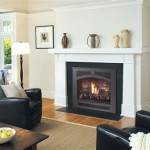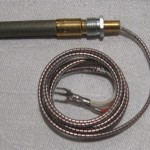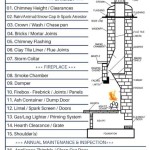How to Install a Vented Gas Fireplace: A Comprehensive Guide
Installing a vented gas fireplace can significantly enhance the ambiance and heating capabilities of a home. However, this project involves working with gas lines and venting systems, demanding meticulous attention to detail and adherence to safety regulations. This article provides a comprehensive guide to the installation process, outlining the necessary steps, precautions, and considerations for a successful and safe installation.
Before commencing any installation, it is crucial to consult and comply with all local building codes and regulations. These codes often dictate specific requirements for gas line connections, venting materials, and clearances to combustible materials. Failure to comply with these regulations can result in fines, rejection of the installation, and, more importantly, potential safety hazards. It is also advisable to have the installation inspected by a qualified professional to ensure compliance and safety.
1. Planning and Preparation
The initial phase of installing a vented gas fireplace involves careful planning and preparation. This includes selecting the appropriate fireplace unit, determining the optimal location for installation, and gathering the necessary tools and materials. A critical aspect of this stage is verifying the compatibility of the fireplace unit with the existing gas line and venting system.
Choosing the Right Fireplace Unit: The selection of the fireplace unit should be based on factors such as heating requirements, aesthetic preferences, and the size of the room. Vented gas fireplaces are available in various styles, including traditional, contemporary, and linear models. It is important to choose a unit that complements the existing décor of the home. The BTU (British Thermal Unit) rating of the fireplace should be appropriate for the size of the space to be heated. An oversized unit can lead to overheating, while an undersized unit may not provide sufficient warmth.
Selecting the Installation Location: The location of the fireplace unit should be carefully considered, taking into account factors such as the proximity to a gas line, the availability of a suitable venting path, and the structural integrity of the wall or floor. The fireplace should be located in a well-ventilated area, away from flammable materials such as curtains, furniture, and bedding. Sufficient clearance should be provided around the fireplace to prevent overheating and fire hazards. The location must also facilitate easy access for maintenance and cleaning.
Gathering Tools and Materials: A comprehensive list of tools and materials is essential for a smooth and efficient installation process. This typically includes:
- Level
- Tape measure
- Screwdrivers (Phillips and flathead)
- Wrenches (various sizes)
- Pipe wrench
- Pliers
- Drill with various drill bits
- Hole saw (appropriate size for venting)
- Safety glasses
- Gloves
- Gas pipe sealant (approved for natural gas or propane)
- Vent pipe (approved for gas fireplaces)
- Vent pipe connectors and fittings
- Fire-resistant sealant
- Non-combustible materials for hearth extension (if required)
- Gas leak detector
- Carbon monoxide detector
Gas Line Inspection: Before proceeding with the installation, thoroughly inspect the existing gas line to ensure it is in good condition and capable of supplying the required gas pressure for the fireplace. If the existing gas line is inadequate, a qualified gas technician should be consulted to upgrade or extend the gas line as necessary. The shut-off valve for the gas line should be easily accessible in case of an emergency.
2. Venting System Installation
The venting system is a critical component of a vented gas fireplace, as it safely removes combustion byproducts from the home. Proper installation of the venting system is essential for preventing carbon monoxide poisoning and ensuring the efficient operation of the fireplace. Vented gas fireplaces require a direct vent system, which draws combustion air from outside and exhausts flue gasses directly outside as well. This contrasts to vent-free systems, which do not vent to the exterior.
Determining Venting Requirements: The manufacturer's instructions will specify the type and size of vent pipe required for the fireplace unit. It is crucial to adhere to these specifications to ensure proper venting and prevent safety hazards. The venting system should be designed to minimize bends and horizontal runs, as these can impede airflow and reduce venting efficiency.
Installing the Vent Pipe: The vent pipe should be installed according to the manufacturer’s instructions, ensuring that all joints are properly sealed and secured. Use the appropriate vent pipe connectors and fittings to create a tight and leak-proof seal. Apply fire-resistant sealant around the vent pipe where it passes through walls or ceilings to prevent the spread of fire. The vent pipe should be properly supported to prevent sagging or damage.
Vent Termination: The vent termination, which is the point where the vent pipe exits the building, should be located in a safe and accessible location, away from windows, doors, and air intakes. The termination should be designed to prevent rain, snow, and debris from entering the vent pipe. The vent termination should be properly sealed to prevent water leaks and air infiltration.
Clearances to Combustible Materials: Maintain the minimum clearances to combustible materials specified by the manufacturer. This is particularly important around the vent pipe, as it can become very hot during operation. Use non-combustible materials to protect combustible materials from heat. Failure to maintain proper clearances can result in fire hazards.
3. Gas Line Connection and Testing
Connecting the gas line to the fireplace unit requires meticulous attention to detail and strict adherence to safety regulations. This step should only be performed by individuals who are familiar with gas line connections and have the necessary tools and experience.
Shutting Off the Gas Supply: Before commencing any gas line work, ensure that the gas supply is completely shut off at the main shut-off valve. This will prevent accidental gas leaks and potential explosions. Double-check that the gas supply is off by testing a nearby gas appliance.
Connecting the Gas Line: Connect the gas line to the fireplace unit using the appropriate fittings and connectors. Apply gas pipe sealant to all threaded connections to ensure a tight and leak-proof seal. Tighten all connections securely, but avoid over-tightening, as this can damage the fittings. Ensure the gas line is properly supported to prevent stress on the connections.
Leak Testing: After making the gas line connection, thoroughly test for gas leaks using a gas leak detector or a soap-and-water solution. Apply the leak detector or solution to all gas line connections and fittings. If bubbles appear, indicating a leak, immediately shut off the gas supply and tighten the connection. Repeat the leak test until no leaks are detected.
Pressure Testing: It is recommended to perform a pressure test on the gas line to ensure it can withstand the operating pressure of the fireplace. This test should be performed by a qualified gas technician using a manometer.
4. Final Installation and Testing
Once the venting system and gas line connections are complete, the fireplace unit can be installed in its final location. This involves securing the unit to the wall or floor, connecting the electrical components, and testing the operation of the fireplace.
Securing the Fireplace: Secure the fireplace unit to the wall or floor according to the manufacturer's instructions. Use appropriate fasteners to ensure the unit is stable and secure. Ensure the unit is level and plumb.
Electrical Connections: Connect the electrical components of the fireplace unit to the appropriate power source. Ensure the wiring complies with local electrical codes. Use a ground fault circuit interrupter (GFCI) outlet for added safety.
Initial Startup and Testing: Before operating the fireplace, carefully review the manufacturer's instructions. Turn on the gas supply and ignite the pilot light according to the instructions. Observe the flame pattern to ensure it is burning properly. Test all of the fireplace's features, such as the thermostat, remote control, and blower fan.
Carbon Monoxide Detection: Install a carbon monoxide detector in the vicinity of the fireplace to provide an early warning of carbon monoxide buildup. Test the carbon monoxide detector regularly to ensure it is functioning properly.
Professional Inspection: It is highly recommended to have the installation inspected by a qualified professional to ensure it complies with all local building codes and safety regulations. A professional inspection can identify any potential problems or safety hazards that may have been overlooked during the installation process.
By following these steps and adhering to all safety precautions, you can successfully install a vented gas fireplace and enjoy the warmth and ambiance it provides. Remember, safety is paramount when working with gas appliances. If you are not comfortable performing any of these steps, it is best to hire a qualified professional to do the job.
Gas Fireplace Venting Explained Heatilator

How To Select And Install A Gas Fireplace Log Set Fireplaces Direct Learning Center

What Are The Best Ways To Vent A Gas Fireplace Zoroast
Gas Fireplace Venting Explained Heat Glo

Vented Vs B Vent Direct Free Dixie S
Gas Fireplace Venting Explained Heat Glo

What Is A Direct Vent Fireplace Fireplaces Learning Center

If You Have A Gas Fireplace It May Or Not Chimney Flue

Benefits Of Direct Vent Fireplaces

Direct Vent Vs Natural Www Mygasfireplacerepair Com








